Features
Creative Flavors in Foods, Drinks, and Dietary Supplements
While classic flavors have plenty of staying power, eccentric botanicals, fruits, and global influences are seeing substantial influence.

By: Mike Montemarano
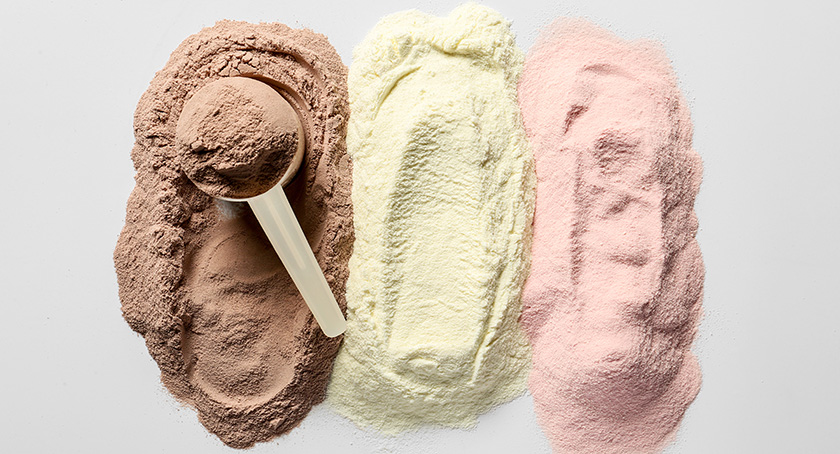
Ahead of any perceptible health benefit, flavor elicits the first impression consumers have with health products. For years, surveys have confirmed that taste, above every other quality, is the most important purchase driver.
Consumer research shows that flavor “was more important to respondents than active ingredients, and performance,” said Robin Rusinko, senior flavorist at Vitaquest International. Even considering inflation, flavor was “even more important than price.”
If there was ever room for compromise on flavor in supplements, foods, and beverages, that time is gone, according to experts.
More than half (59%) of global consumers indicate that taste is influential when determining the value of health and wellness products, which is slightly more important than multifunctional benefits (57%) or even scientific evidence to support health claims (57%), noted Mike Hughes, head of research and insight at FMCG Gurus. This is why gummy or jelly formats are still performing so well, despite efficacy challenges and limited dose capabilities, he added.
“Irrespective of the functional benefits of a health and wellness product, consumers will not turn to products if associated with compromised taste or texture, especially if they are turning to products for prevention over cure purposes … However, a fine line needs to be balanced, as if consumers feel a product is too indulgent, they could be skeptical of the health and wellness benefits,” Hughes said.
The selection of flavor options in product development stages is, in part, a decision about risk and reward, noted Kevin Kumetz, senior formulator, product development at Vitaquest.
“From a broad perspective, what we are seeing is that brands typically play it safe when they integrate flavors into their products … However, there is an upward tick in fashionable flavors,” Kumetz said. “There is a danger in that, however. Consumers may try it out, but it may not be as many as those who buy supplements sporting more common fruit flavors … For brands, it’s hard to make a commitment to those new flavors when you’re not sure what the reception will be. You could hit lightning in a bottle, like companies did when they started introducing blue raspberry or strawberry kiwi-flavored products, but it is difficult to determine what will be successful.”
For that reason, experimental flavors still need to be approachable, said Lindsay Parks, senior marketing communication and social media specialist at Bell Flavors and Fragrances.
“Flavors should be approachable and familiar. Given that interest in functional additions to foods and beverages is more limited, incorporating recognizable flavors to peak consumer curiosity is key … Gen Z and Millennials tend to have more diverse palates and are more open to experimenting with unique and globally inspired flavors. Yes, across the consumer spectrum, we can’t deny the desire for comforting, nostalgic flavors like cotton candy, brownie batter, or rainbow sherbet,” said Parks.
Further, flavors can help communicate the functionality of a food, beverage, or dietary supplement.
“The food industry relies on flavors and sensory cues to evoke emotional and physical responses from consumers,” said Hélène Moeller, vice president of global product marketing for flavors and colors at ADM. “Orange signals vitamin C and immune support, guarana connects with caffeine and mental clarity, and spearmint relates to digestive support. Botanical extracts that are associated with consumer-desired health benefits, such as immune function, brain function, heart health, weight management, gut health, sleep and mood, will continue to drive product innovation.”
Top Performing Flavors
Across various product types, plenty of flavors are seeing double-digit growth.
In the past 52 weeks ending in May 2024, wellness bars tracked by market analyst SPINS largely featured traditional dessert flavors in the top selling positions, though all were experiencing declines in sales from the year prior. Complex dessert flavors saw the strongest double-digit growth, while fruit flavors, by and large, also performed well.
The top selling wellness bar flavors included:
- Chocolate ($661.7 million, -8.5%);
- Chocolate peanut ($492.8 million, -4.5%);
- Chocolate chip/chunk ($395.3 million, -0.9%);
- Peanut butter ($269.5 million, -2.6%);
- Caramel ($121.4 million, -8.8%);
- Chocolate nut ($108.3 million, +1.9%);
- Cookies and cream ($91.9 million, +29%);
- Strawberry ($66.2 million, +1.9%);
- Blueberry ($64.5 million, +2.5%); and
- Lemon ($63.7 million, -13.8%).
When it comes to growth in bar flavors, some standouts included:
- Orange blends ($1.5 million, +1,046%);
- Oatmeal fruit ($386,000, +224.2%);
- Cookie dough ($19.4 million, +109.2%);
- Brownie ($12.9 million, + 428.7%);
- Apple cinnamon ($6.3 million, +72.8%);
- Honey ($10 million, +43.6%); and
- Oatmeal raisin ($29.8 million, +21%).
The top-selling flavors in functional beverages tracked by SPINS over the past year were:
- Ginger ($196 million, -1.5%);
- Fruit blends/mixes ($165 million, +12.8%);
- Berry (blends/generic, $86 million, +4.5%);
- Apple ($49 million, +37.2%);
- Mango ($42 million, +4%);
- Peach ($27 million, +30.9%);
- Orange blends ($25 million, +17.1%);
- Strawberry ($24 million, +17.8%);
- Pomegranate ($21 million, -1.4%);
- Cherry ($19 million, -16.2%); and
- Mint ($18 million, -0.6%).
A boom in better-for-you sodas has made a big splash in SPINS’ flavor charts that track the functional beverage category. Root beer ($15 million, +52.3%); cola ($9.2 million, +79.1%); lemonades in combination with other flavors ($16.7 million, +15.9%); and ginger ale ($2.02 million, +205.7%) all saw noteworthy growth.
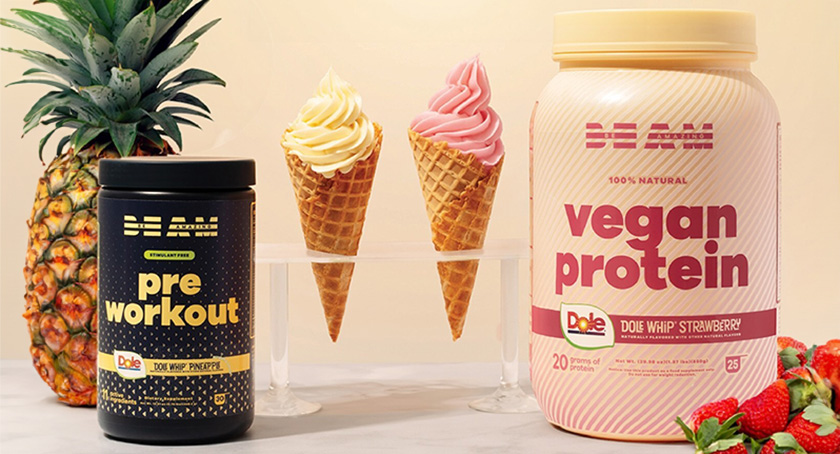
Brand Crossovers
One of the most notable flavor trends for dietary supplement powders and functional nutrition products has been partnerships with legacy dessert, candy, and cereal brands. The nostalgia factor is big here.
“U.S. consumers crave a throwback to their childhood, and flavors that bring comfort and tap into cherished memories are no exception,” said Parks.
In early June, the supplement brand BEAM Be Amazing expanded its partnership with Dole Food Company to launch two new supplements featuring the flavor of Dole Whip, a dairy-free soft serve frozen dessert that was introduced in 1984 and recently came back to retail. The new expansion includes a Dole Whip pineapple flavored preworkout, and a Dole Whip strawberry-flavored, sugar-free protein shake with added prebiotic fiber.
In March, the brand think! launched a new line of miniature protein snack bars including three flavors inspired by Girl Scout Cookies, including Girl Scout Adventurefuls, a mix of chocolate, caramel, and sea salt; Girl Scout Chocolate Peanut Butter, a creamy peanut butter wrapped in a chocolatey coating; and Girl Scout S’mores, which combine the profiles of marshmallow, graham cracker, and chocolate.
The supplement brand Ghost has practically built its reputation through standout flavors, collaborating with iconic brands like Sour Patch Kids, Warheads, Sonic, Oreo, Chips Ahoy!, Cinnabon, and more. Recently, the company extended its portfolio into the functional foods market through a partnership with General Mills to launch a high-protein cereal available in peanut butter and marshmallow varieties.
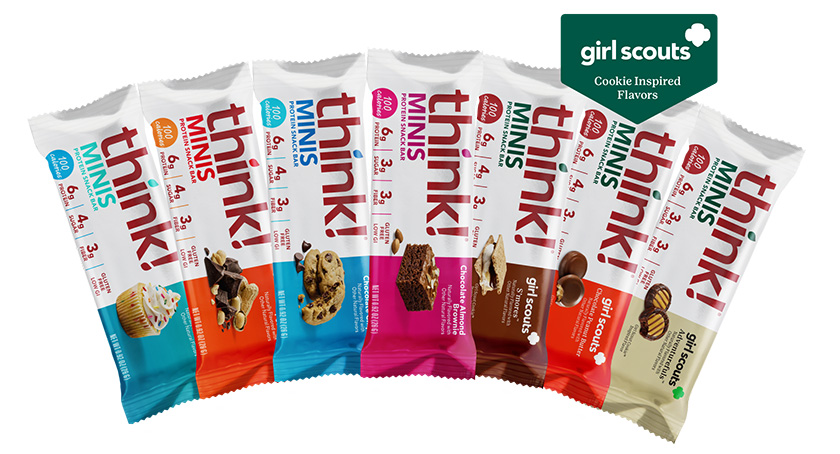
Botanicals & Eccentric Fruits In Vogue
Botanical flavors are rising in prevalence, with 33% of global consumers seeking these flavors in their foods and beverages in the past year, noted Parks.
“We are seeing interest in botanical combinations on the rise,” said Kumetz at Vitaquest. “A floral component you may use in a tea pairs well with a fruit, like mango or lemon, such as combinations of hibiscus lemonade and peach tea.
Flowers, plants, herbs, and fruits can “offer consumers an elevated taste experience, adding a layer of depth and sophistication to products,” according to Flavorchem, which recently launched a new line of signature botanical flavors called “Bloom” to help manufacturers capture this trend. Flavorchem’s “Bloom” collection includes cranberry ginger, grapefruit bergamot, lychee rose, peach lavender, pear elderflower, and watermelon mint.
“According to Mintel, 36% of consumers say that today’s health trends encourage them to experiment with new flavors and ingredients. This is especially prevalent for Millennials, followed by both Gen Z and Gen X,” said Parks.
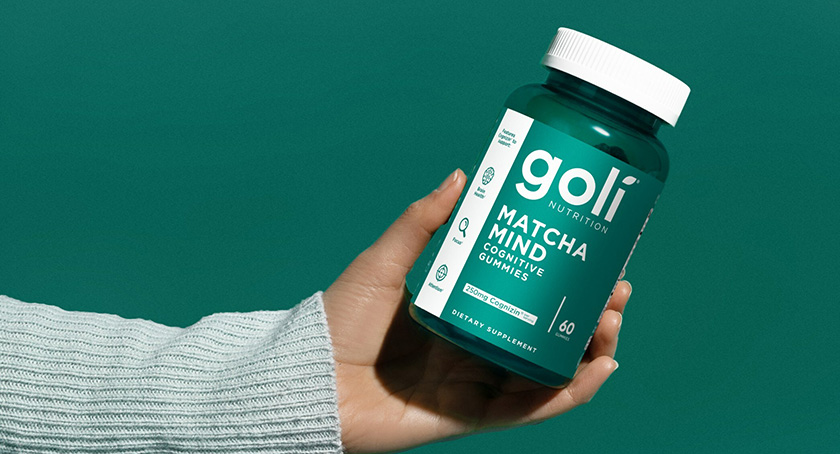
Consumers associate health benefits with flavor profiles based on their knowledge of the food or ingredient, she added. “Great examples of this include citrus fruits, berries, certain botanicals, and even specific international ingredients such as kimchi. Showcasing inherent health benefits alongside items that contain new/emerging flavors and ingredients provides a value-add and may just seal the deal at point of purchase.”
Moeller at ADM noted that plant extracts as well as fruit and vegetable powders can help manufacturers deliver on “closer-to-nature” flavors. The tart, edible floral component of hibiscus pairs well with vanilla and sweet berry taste profiles, for instance, and connotes metabolic and blood pressure support. Carob, as another example, is commonly used as a cocoa substitute, so consumers may link it to lower glycemic index and lower cholesterol.
There’s growing interest in more off-center fruit flavors as well, experts noted.
For instance, ADM has seen demand for Corefold, its line of citrus ingredients based on proprietary separation and concentration technologies designed to capture authentic flavors of novel varieties like calamansi, pomelo, key lime, bitter orange, and Meyer lemon.
“Corefold focuses on the core part of the citrus oil, emphasizing the molecules responsible for impact and mouthfeel while capturing top notes for freshness and aroma, and therefore provides a great base for flavors,” said Moeller.
The latest iteration of nootropic and cognitive support products are taking advantage of the relaxing qualities of floral and herbal notes, as well as more sophisticated fruit flavors, which can offer an energizing sensation.
Goli recently launched Matcha Mind vegan gummies, which combine matcha with Cognizin branded citicoline. “The health benefits of matcha have captured the hearts and minds of consumers,” Paula Sandoval, vice president of operations, said in a statement.
Olly has introduced a new line of cognitive support chews as well, including a focus blend available in raspberry jam flavor, an energy blend available in a tropical groove flavor, and a chill thinker blend available in a pomegranate bliss flavor.
U.S. consumers largely associate the herbaceous flavor of green rooibos with mood and stress relief, and as a result, ADM decided to partner with University of Canberra researchers to explore the effects of green rooibos tea extract on measures of stress and anxiety in a clinical setting, Moeller noted.
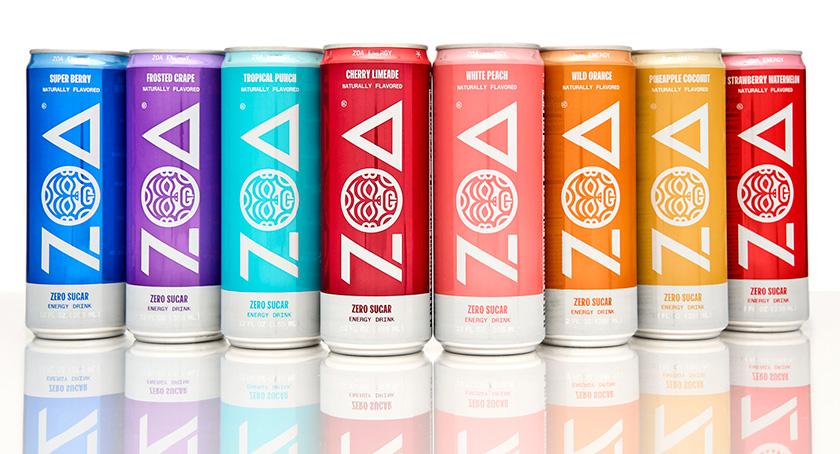
Energy Drinks for the Aging Millennial
“Closer-to-nature” flavors have been popular among disruptive energy drink brands seeking out a more mature, naturally-minded audience. Kumetz observed that although natural flavors are appealing to all age groups, Millennials have a particularly strong preference for them. Disruptive energy drink manufacturers are working to win over those in their 30s and 40s.
For instance, Odyssey Elixir debuted a line of energy drinks called 222 featuring 222 mg of caffeine alongside lion’s mane and cordyceps extracts. Each of its flavors, pineapple mango, strawberry watermelon, blue raspberry, and cherry lime, are derived entirely from juice concentrates, and more natural sweeteners like monk fruit extract.
NOBL Beverages, a company specializing in cold-brewed coffees, recently acquired and relaunched energy drink brand Mati, which brands itself as an organic better-for-you option that delivers a focused energy with no spikes or crashes. The product features craft-brewed guayusa tea, fruit juice, and carbonated water in blueberry pomegranate, tropical pineapple, peach mango, citrus, and raspberry mint varieties.
Zoa, an energy drink brand co-founded by Dwayne Johnson, features a diverse blend of sugar-free fruit flavors that go beyond the more generic varieties, including cherry limeade, pineapple coconut, tropical punch, white peach, and more.
When it comes to energy drinks, the source of caffeine matters more than ever to wellness-minded consumers, and taste is an important cue.
“Our recently introduced WKUP formulation blends guarana, carob, and green tea extracts, with modest confidence that it may perform comparably to caffeine without common concerns such as increased heart rate and temporary impact on blood pressure,” said Moeller. “Green tea may impart floral and vegetal notes, while carob is similar to the taste profile of chocolate, with mild sweetness and nuttiness. Similarly, guarana has flavor attributes of an ultra-dark chocolate bar, with nutty, woody, malty and vegetative notes and an intense bitterness. When guarana seeds are first extracted, they have a floral note, although that recedes as the seeds are concentrated and used as a liquid or dried to a powder.”
A Stream of Hydration/Electrolytes
The hydration/electrolytes market has become more competitive, and as a result, both established brands and newcomers realize that having just one or two flavors isn’t enough.
For instance, DripDrop’s individual electrolyte packets come in nine flavors, including a Juicy Variety Pack with cherry, concord grape, fruit punch, and strawberry lemonade; a Bold Variety Pack featuring berry, watermelon, lemon, and orange; and a Tropical Variety Pack featuring mango, passionfruit, acai, and pina colada, along with a sugar-free variety of four flavors.
In this category, the tide might be shifting toward more subtle, subdued flavors that convey simplicity, and perhaps even the return to basics, Hughes noted.
Nectar, for instance, launched a line of zero-calorie, sugar-free hydration stick packs which cut back on what may be excessive amounts of sodium for everyday purposes. As a result, the stick packs have a more subdued flavor sourced from organic fruits, since there’s less sodium to cover up with sweetness.
Gatorade also just launched Gatorade Water, an unflavored, electrolyte-infused water to appeal to athletes who don’t necessarily have a sweet tooth but need the electrolytes.
Dialing it Back
Kumetz noted that other product categories could also do well catering to preferences for milder options. “While highly flavored and sweet supplements are in demand, roughly 30-40% of our customers want products that are lightly flavored or less sweet. Typically, these customers are targeting a specific consumer demographic — people who are 30-plus years old and are interested in taking supplements that are flavored with natural sweeteners,” he said.
If certain supplements taste too sweet, consumers might even question its efficacy, Kumetz added. “Strangely enough, there are some instances in which ingredients in supplements give it more of an earthy taste, but companies and consumers actually like it that way — they feel that if it doesn’t taste good, it’s probably more effective. We recently developed a product for the chewable tablet business. It was a great-tasting zinc lozenge, but since it tasted too good, it was rejected. The client wanted it to taste more like a vitamin, so people knew they were getting their vitamins and taking something healthy.”
Kumetz noted that Vitaquest often uses certain modifiers to accentuate flavors in a way that is more subtle compared to sweeteners like stevia or monk fruit. Further, the company uses microencapsulation, which helps to increase the bioavailability of certain ingredients, to subdue challenging off-notes and avoid a sweetness overload.
“Microencapsulation involves spray coating particles, which creates a barrier layer that makes the product dissolve slower, so there isn’t any aftertaste on the tongue after you’re done with it. This is really more formula related, but it does mask tastes, and impacts flavoring.”
Keeping Labels Clean
Consumers in North America (75%) and Europe (73%) agree or strongly agree that “it is important that food and drink products do not contain artificial colors,” Moeller noted, citing data from FMCG Gurus. Still, bold and expressive colors are expected, especially in the beverage, dessert, and snack categories.
In response to this demand, ADM developed a Colors from Nature brand of ingredients and technologies, featuring a vertically-integrated supply chain for full control over color creation, including harvesting, washing, pigment extraction, filtration, concentration, stabilization, and deodorization, Moeller added. “Our extraction technology also removes sugars, starches, and proteins, helping colors withstand challenging formulation environments.”
While artificial colors like FD&C reds, yellows, greens, and blues have wide-ranging applicability, clean-label alternatives to these colors are often limited to certain applications, due to differences in how a product is prepared, as well as pH content and other factors, said Moeller.
“For example, anthocyanins from purple sweet potato and red cabbage produce desirable hot pink and red hues, but they are limited in use to pH systems of 4 or below. Cochineal and carmine are also common pink and red color solutions, although they are unsuitable for vegetarian or kosher diets. Our proprietary and patented micronized technology delivers critical plating characteristics within color solutions, such as shades derived from beet juice or black carrots, for exceptional stability,” she said.
The industry is also seeking alternatives to FD&C red #40 (Allura Red AC), yellow #5 (Tartrazine) and #6 (Sunset Yellow FCF), green #3 (Fast Green FCF), and blue #1 (Brilliant Blue FCF) and #2 (Indigotine or Indigo Carmine). In response, ADM has developed alternative solutions for each of the colorants, one of which is sourced from the Amazonian huito fruit, which can deliver blues, purples, greens, and browns across all acid, light, and heat conditions.
Flavor competition is heating up so much that certifications are becoming points of differentiation. For example, over the past several years, Vitafusion has expanded its portfolio of products featuring the ChefsBest Award seal, which recognizes that a brand’s flavor surpasses quality standards established by an independent panel of professional chefs. So far, Vitafusion is the only gummy to receive this award. Designer Wellness’ Designer Whey Protein also recently received a ChefsBest Award for its flavors.
Education on what constitutes “natural” or “artificial,” and how that translates to both scalability and quality concerns is important.
“Some of Vitaquest’s customers are adamant about having no flavors, saying that they are chemicals, and associate that chemicals are bad for the body. They want extracts that come directly from apples, strawberries, and bananas. The only thing I can suggest is to educate consumers on what flavors really are, compared to extracts,” said Rusinko. “When flavor chemists make a natural strawberry flavor, they use natural raw materials that make up the strawberry. The difference is that these flavors are concentrated and scalable.”
Taming Tough Ingredients
Flavor choice is important in complementing a masking agent’s ability to blind certain receptors of the tongue, Kumetz noted.
“Fruit punch can hide things that a bland orange cannot hide as much, so we select in-your-face flavors for those applications. Flavor choice may also involve adjusting the tartness a bit more, so you are tasting tartness more than the bitter. If you are stuck with something like fish oil, that will be more challenging,” he said.
Beyond flavor, texture is a key consideration as research suggests mouthfeel may be just as important as taste when it comes to consumer appeal and dietary behavior patterns, respectively.
“Pea protein and rice protein are very grainy, and the consumer might be put off by that, so Vitaquest has oil powders and natural flavors that make it less gritty on the tongue and make it taste more like a whey protein shake,” Kumetz said.
“Some of the biggest challenges come from off-tastes, including earthy or beany notes from plant proteins and plant-based ingredients, astringent or bitter notes from botanicals, and gritty textures from added fiber,” said Moeller. “We apply our TasteSpark flavor modulation and masking technology to overcome these formulation hurdles and optimize the sensory experience in better-for-you formulations. Products that include functional ingredients like fiber or protein, or have reduced sugar, salt, or fat content, may need support in building back texture and mouthfeel and masking off-notes.
A team of researchers from the Leibniz Institute for Food Systems Biology writing in Nature Food published an article on ways that new atomic force microscopy techniques can be used to better understand the neglected role of mouthfeel in functional foods. The findings in this area will be especially important for products that contain reduced salt, fat, sugar, and calories.
“Mechanoreceptors in particular, which react to pressure or stretching, have been under-researched so far with regard to the optimal mouthfeel and their contribution to the flavor of a food,” stated Melanie Kohler, junior research group leader. “With regard to food research, we expect that future results will lead to a revision of our traditional definition of flavor … by including mechanical perception as an additional factor alongside taste and smell.”
About the Author: Mike Montemarano has been the associate editor of Nutraceuticals World since 2020. He can be reached at mmontemarano@rodmanmedia.com.


